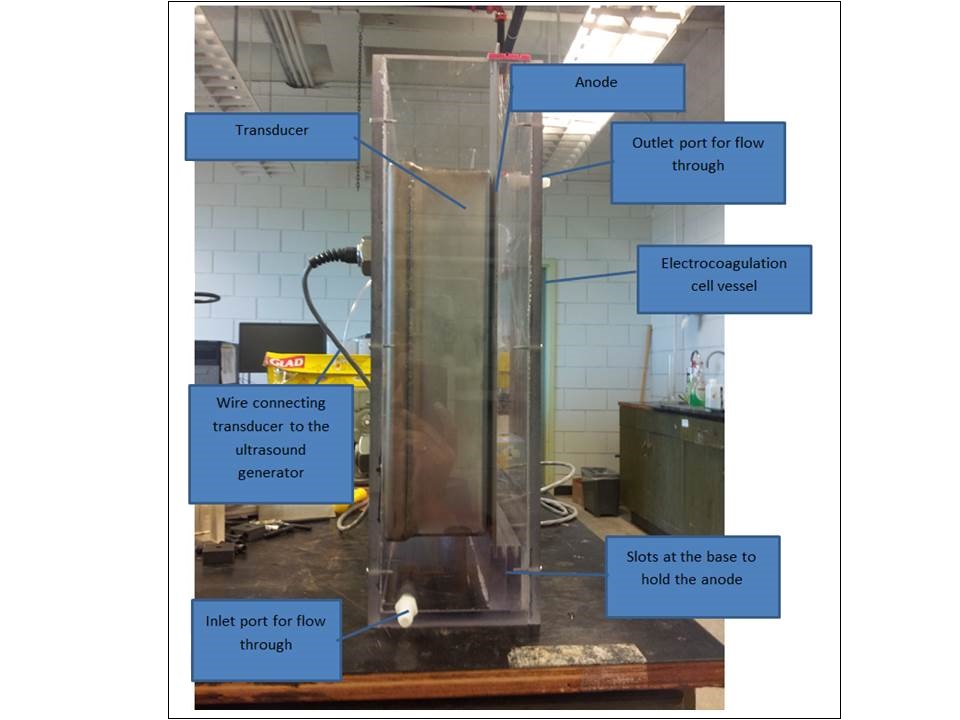Lead Proponent: Petroleum Technology Alliance Canada (PTAC)
Location: Alberta
ecoEII Contribution: $ 387,500
Project Total: $ 743,000
Hydraulic fracturing is an oil and gas production technology that has revolutionized the industry. While successful, it has raised concerns regarding its environmental impact, particularly concerning the volume and contamination of water. As a result, the technology has been subject to moratorium in several jurisdictions. Treatment and recycling of flow-back water offers a solution to these concerns. However, water treatment, as practiced worldwide for municipal and industrial applications (including oil and gas) generally involves costly fixed assets - not practical for hydraulic fracturing because well locations constantly change and water injection is required once in the life of the well. Moreover, current water treatment solutions have a large ecological footprint due to the transport and use of chemicals.
One promising alternative is electrocoagulation (EC) which replaces chemical coagulation and flocculation and operates in a continuous flow. Metals released from the anode during electrolysis cause coagulation of pollutants (such as silica, heavy metals, suspended and colloidal solids) aiding their separation from water. EC can be deployed as a practical mobile solution powered by electricity, and does not require the transportation of chemicals to field locations. However, efficiency of the EC process is impacted by the regular fouling (deposition of particulates on the surface) of the electrodes. The process becomes obstructed, and the system has to be shut-down for electrode cleaning and then restarted. In response to the need for a solution to the fouling problem, Easwara Origins Corp. set out to conduct proof-of-concept work. Consequently, PTAC (of which Easwara is a member) led the submission of a proposed project Novel Water Treatment Technology for Application to Hydraulic Fracturing for ecoEII funding. The Project was awarded $387,500 to advance the proof-of-concept developed by Easwara into an in-flow continuous solution with the mobility, ruggedness and reliability required by industry.
Results

Caption: Combined Electrocoagulation and Ultrasound Unit
Text description
Combined Electrocoagulation and ultrasound unit: shows electrocoagulation cell vessel, transducer and wire connecting the transducer to the ultrasound generator; anode and slots at the base to hold the anode; and, inlet and outlet ports for flow through.
A combined EC and ultrasonic laboratory unit was specially designed and constructed. The ultrasonic generator and transducer are both made by Blackstone-NEY. The transducer consists of piezoelectric drivers, and is enclosed in a stainless steel case and mounted against the EC cell wall. To start off the experiments, a large quantity of water was sourced from the hydraulic fracturing wastewater pond of a large producer in northwestern Alberta. The wastewater was first analyzed for chemical composition of target contaminants. The water was then pumped into an EC cell and treated by application of the EC process. EC treatment led to the coagulation of water contaminants and the fouling of the electrode. Electrode fouling was comprised 90% of iron, 8% magnesium, 2% calcium and approximately 0.1% barium and silicate. The average time resulting in heavily fouled electrode was 20 to 30 minutes. It was determined that the EC process removed up to 90% of suspended solids and oil from the wastewater, and the application of a process gas bubbled into the water during the EC process increased the removal of total hardness from 50% to 90%.
De-fouling was performed with the fouled electrode placed parallel to the ultrasonic transducer. Ultrasound causes cavitation bubbles in water, which collapse and create intense pressure and temperature at the electrode surface, scouring the scale off the electrode. Cleaning was achieved due to sheer forces created by ultrasonic waves on the electrode surface. Visible scale deposition on the EC anode was completely removed. Of the conditions tested, the most rapid removal of fouling took place in two minutes. The results confirmed that application of an ultrasound process for rapid cleanup of the anode during EC treatment is highly effective.
Benefits to Canada
When commercialized, the enhancement to EC technology will lead to manufacturing and service opportunities in Canada. Whether to reduce costs or to comply with environmental regulations, the technology will allow oil and gas producers to improve their operations.
Next Steps
Easwara applied and received a provisional patent for the technology from the United States Patent Office. Preparations for the patent application are underway, to be filed in 2016. It is expected that the project will lead to follow-on projects that advance the technology to full commercialization and industrial deployment.